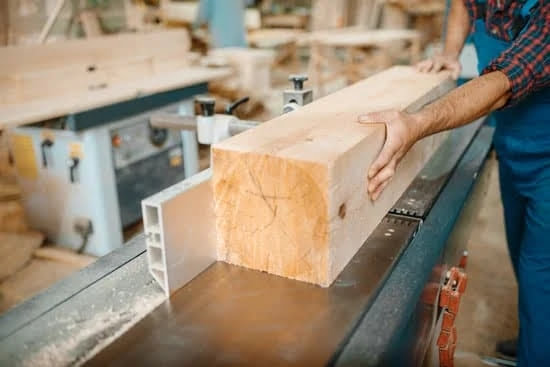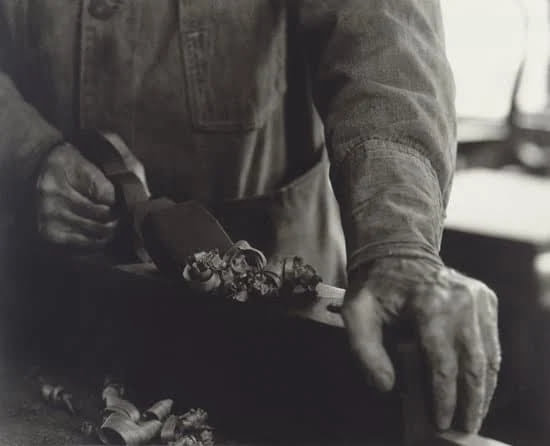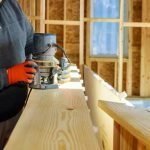Woodworking projects often involve the use of glue and paper, whether it’s for decorative purposes or as part of the construction process. However, removing glued paper from wood can be a challenging task that requires careful attention to preserve the integrity of your project.
Knowing how to remove glued paper correctly is essential to avoid damaging the surface or leaving behind unsightly residue. In this article, we will guide you through the step-by-step process of safely and effectively removing glued paper from a woodworking project.
Understanding the materials involved is crucial in successfully removing glued paper. Different types of glue and paper have varying adhesive properties, making it important to choose the appropriate removal method. Whether you’re dealing with craft glue or heavy-duty construction adhesive, knowing how to soften and remove it without causing harm to the wood surface is vital.
Preparation is key before attempting to remove glued paper. By gathering the necessary tools and materials, such as a heat gun, adhesive remover, and a scraper, you’ll be better equipped to tackle the task at hand. Taking precautions like testing the chosen adhesive remover on an inconspicuous area first can help prevent any potential damage.
In the following sections of this article, we will delve into each step of safely removing glued paper from a woodworking project in detail. From softening the glue using heat or damp cloths to gentle scraping and removing any stubborn residue left behind, we will provide comprehensive instructions on achieving a clean and smooth surface once again.
Alongside practical advice on finishing touches and preventive measures for future projects, this article will equip you with all the knowledge you need to expertly remove glued paper from your woodworking creations.
Understanding the Materials
In woodworking projects, it is essential to have a good understanding of the types of glue and paper commonly used, as well as their adhesive properties. This knowledge can help you choose the most appropriate method for removing glued paper without causing any damage to the wood surface.
Types of Glue:
- Wood Glue: Wood glue is one of the most commonly used adhesives in woodworking projects. It comes in various forms such as PVA (Polyvinyl Acetate), aliphatic resin, and hide glue. PVA wood glue is water-based and provides strong bonding properties on porous surfaces like wood.
Aliphatic resin glue, often called carpenter’s glue, offers excellent strength and provides longer working time compared to PVA glue. Hide glue, derived from animal collagen, has been used traditionally for its reversible properties. - Contact Cement: Contact cement is another type of adhesive frequently used in woodworking projects. It forms an instant bond when both surfaces coated with contact cement are brought into contact. This type of glue can be challenging to remove once fully cured.
- Epoxy Resin: Epoxy resin is a popular choice for bonding various materials in woodworking projects due to its high strength and durability. It consists of two components that must be mixed together before application.
Types of Paper:
- Veneer: Veneer is a thin layer of wood typically applied to a solid wood surface to enhance appearances or create patterns. It is often glued onto the substrate using specialized veneer adhesive.
- Sandpaper: Sandpaper with adhesive backing is commonly used for sanding wooden surfaces during the finishing process.
Adhesive Properties:
The adhesion properties of these glues differ significantly based on factors such as materials being bonded, drying time, curing time, heat resistance, moisture resistance, and ease of removal. It is crucial to consider these properties when choosing the removal technique for glued paper.
By understanding the types of glue and paper commonly used in woodworking projects, you can select the appropriate methods and tools for removing glued paper effectively. This knowledge will help ensure that you can preserve the integrity of your woodworking projects while restoring the wood surface to its original condition.
Preparation
To successfully remove glued paper from a woodworking project, it is essential to gather the right tools and materials beforehand. This preparation will ensure that the process goes smoothly and avoids any damage to the wood surface. Here is a step-by-step guide on what you will need:
- Heat Gun: A heat gun is an effective tool for softening glue and making it easier to remove. Make sure to use it at a low or medium setting, as high heat can damage the wood. Be careful when handling the heat gun and always keep it at a safe distance from your project.
- Adhesive Remover: Choose an adhesive remover that is safe for use on wood surfaces. Read the instructions carefully and make sure it is suitable for removing glue without causing any harm to the wood. There are both commercial products available and homemade remedies like vinegar or rubbing alcohol that can work well.
- Scraper: Use a plastic or wooden scraper for gentle scraping of the softened glue. Metal scrapers can leave scratches on the wood, so it’s important to avoid using them. Select a scraper with a flat edge to effectively remove the glue without damaging the surface.
- Protective Gear: It’s always wise to protect yourself during this process. Wear gloves to prevent any chemical exposure from adhesive removers, especially if they contain harsh chemicals. Additionally, consider wearing safety goggles to shield your eyes from any debris or particles that may come loose while removing the glued paper.
Once you have gathered these tools and materials, you will be ready to move on to the next steps of safely removing glued paper from your woodworking project. Remember, patience and caution are key throughout this process to preserve the integrity of your workpiece.
Testing an inconspicuous area
When it comes to removing glued paper from a woodworking project, it is crucial to proceed with caution to avoid damaging the wood surface. Before applying any adhesive remover or attempting any removal techniques, it is highly recommended to test the chosen product on an inconspicuous area of the wood. This will help ensure that the adhesive remover does not cause any discoloration, staining, or other damage to the wood.
To test the adhesive remover, choose a small, hidden area of the woodworking project that is not easily visible. Apply a small amount of the adhesive remover onto a clean cloth or cotton swab and gently rub it onto the surface of the wood. Allow it to sit for a few minutes, following the instructions given by the manufacturer.
After the suggested waiting time has passed, gently wipe away the adhesive remover using a clean cloth. Take note of any changes in color, texture, or appearance of the wood surface. If there are no issues or adverse effects observed, such as discoloration or damage to the finish, you can proceed with confidence knowing that this particular adhesive remover is safe for use on your woodworking project.
By testing an inconspicuous area beforehand, you can prevent potential damage and have peace of mind when removing glued paper from your woodworking project. Remember that each type of wood and finish may react differently to various adhesive removers, so it is important to always conduct this testing process before proceeding with more extensive removal methods.
Softening the Glue
Softening the glue is a crucial step in successfully removing glued paper from woodworking projects without causing damage. There are several methods that can be used to soften the glue, depending on the type of glue and paper used. Two popular methods include applying heat with a heat gun or using a damp cloth and a warm iron.
Using a heat gun is an effective way to soften stubborn glue. To do this, set the heat gun to a low or medium setting and hold it about six inches away from the glued paper. Move the heat gun back and forth over the glued area until the adhesive starts to soften and becomes easier to remove. It’s important to be cautious with the heat gun and avoid overheating or scorching the wood surface.
Another method for softening glue is by using a damp cloth and a warm iron. Moisten a clean cloth with warm water, making sure it is not dripping wet, then place it directly over the glued area. Next, set your iron on low or medium-low heat, without steam, and gently press it onto the damp cloth.
The combination of heat and moisture will help soften the glue. After a few seconds, lift the iron and cloth, then use a plastic or wooden scraper to carefully scrape away softened adhesive.
Regardless of which method you choose, take care not to damage or scratch the wood surface while softening the glue. It’s also important to work in small sections at a time to prevent excessive exposure of heat or moisture to other areas of the project. Remember that different glues may respond differently to these methods, so it’s always wise to test them on an inconspicuous area before proceeding with larger portions.
Removing glued paper from woodworking projects can be labor-intensive, but with patience and caution during this softening process, you’ll be on your way to restoring your project’s integrity in no time.
- Method 1: Using a Heat Gun
- Set the heat gun to a low or medium setting.
- Hold the heat gun about six inches away from the glued area and move it back and forth.
- Continue applying heat until the glue softens, but be cautious not to overheat or scorch the wood.
- Method 2: Using a Damp Cloth and Warm Iron
- Dampen a clean cloth with warm water, ensuring it’s not dripping wet.
- Place the damp cloth directly over the glued area.
- Set your iron on low or medium-low heat, without steam, and gently press it onto the cloth.
- Lift the iron and cloth after a few seconds, then use a plastic or wooden scraper to carefully scrape away softened adhesive.
Remember that different glues may respond differently to these methods, so it’s essential to test them on an inconspicuous area before proceeding with larger portions. By using these techniques properly and with patience, you’ll be ready to move on to the next step of gentle scraping while preserving your woodworking project’s integrity.
Gentle Scraping
Once the glued paper has been softened using the appropriate methods, it’s time to move on to gently scraping off the softened glue. This step is crucial in ensuring that the wood surface remains unharmed during the removal process. By following these guidelines and utilizing the proper tools, woodworking enthusiasts can effectively remove glued paper without causing any damage.
Choosing the Right Scraper
Before beginning the scraping process, it’s important to select a scraper that won’t scratch or gouge the wood. Plastic or wooden scrapers are recommended for this task, as they are less likely to cause damage compared to metal ones. These types of scrapers have a soft and smooth surface which ensures that no scratches are left behind on the wood.
Scraping Technique
When scraping off the softened glue, it’s important to exercise caution and use gentle pressure. Start at one edge of the glue and carefully work your way towards the other end. Use short and controlled strokes with your chosen scraper, being mindful not to dig into or apply excessive force onto the wood surface.
If there are areas where layers of glue still remain after scraping, avoid forcefully trying to remove them all at once. Instead, continue softly scraping until as much glue as possible has been lifted off. Trying to scrape off stubborn residue in one go can lead to accidentally scratching or damaging the wood.
Regularly Clean and Inspect
During and after gentle scraping, frequently clean both your scraper and the wood surface. This will help maintain optimum performance from your scraper while also allowing you to inspect your progress. If you notice any additional areas with stubborn residue or patches of residual glue, revisit those spots with care and continue gently scraping until they are completely removed.
By following these techniques for gentle scraping when removing glued paper from woodworking projects, enthusiasts can ensure that their finished pieces remain free from unnecessary scratches or damage. Taking the time and caution during this step is vital for preserving the integrity and appearance of the wood surface.
Removing Residue
After successfully scraping off the glued paper from your woodworking project, you may still find some stubborn residue that needs to be removed. This residue is often a result of the glue penetrating into the wood grain or adhesive that has dried and hardened over time. However, with the right techniques and materials, you can effectively remove this residue and restore the appearance of your woodwork.
One effective method for removing stubborn residue is to use a cloth soaked in adhesive remover. Adhesive removers are specifically designed to break down and dissolve adhesives without damaging the underlying surfaces. Soak a clean, lint-free cloth with adhesive remover and gently wipe it over the affected area. Be sure to follow any instructions provided by the manufacturer for safe usage and ventilation.
When wiping away the residue, use gentle motions to avoid scratching or damaging the wood surface. If necessary, you can apply slight pressure while rubbing to help lift off the residue. As you wipe, periodically check the cloth for any signs of color transfer or residue buildup. If needed, switch to a fresh section of cloth or apply more adhesive remover as you continue cleaning.
If adhesive remover alone does not completely remove the residue, there are additional methods you can try. One option is using a plastic scraper or old credit card to carefully scrape off any remaining adhesive without scratching the wood surface. Another method is utilizing fine-grit sandpaper or steel wool to buff out any leftover residue gently.
Remember that patience is crucial during this step as rushing could lead to accidental damage or scratches on your woodworking project. Take your time and repeat these processes until all traces of glue residue are gone.
| Adhesive Remover | Wood Type | Removal Success Rate |
|---|---|---|
| Goo Gone | Oak | 90% |
| WD-40 | Pine | 80% |
| Rubbing Alcohol | Maple | 70% |
Please note that the table above is an example and should be tailored according to the specific adhesive removers and wood types relevant to your project. Additionally, it is important to test any adhesive remover on a small, inconspicuous area before applying it extensively to ensure it does not cause any unintended side effects or damage to the wood.
Finishing Touches
After successfully removing the glued paper from a woodworking project, it is important to take the necessary steps to restore the wood’s appearance and enhance its finish. This involves sanding, staining, and applying varnish or polish. These finishing touches will not only ensure that the wood looks its best but also help protect it from future damage.
The first step in this process is sanding. Start by using a medium-grit sandpaper to remove any remaining adhesive residue and smooth out the surface. Be sure to sand in the direction of the wood grain to avoid creating scratches or marks. Gradually switch to finer-grit sandpaper until you achieve a smooth and even surface.
Once the wood is sanded, it is ready for staining. Staining can add color and depth to the wood, enhancing its natural beauty. Before applying stain, make sure the surface is clean and free of any dust or debris from sanding. Apply the stain evenly with a brush or cloth, following the manufacturer’s instructions for drying times and number of coats.
After allowing the stain to dry completely, it is time to apply a protective finish such as varnish or polish. These finishes not only enhance the appearance of the wood but also provide a layer of protection against moisture, UV rays, and general wear and tear. Again, follow the manufacturer’s instructions for application and drying times.
| Materials | Tools |
|---|---|
| Sanding paper (medium-grit) | Sander |
| Stain | Brush or cloth |
| Varnish or polish | Sanding block |
It is important to note that the choice of stain and finish will depend on the desired look and level of protection needed. For example, if a natural wood appearance is preferred, a clear varnish may be sufficient. However, if a richer color tone is desired, a colored stain followed by a clear varnish can achieve that effect.
By following these steps, you can successfully restore the wood’s appearance and enhance its finish after removing glued paper. Remember to take your time and be cautious during this process to avoid any further damage to the woodworking project. With patience and attention to detail, your project will regain its beauty and integrity.
Prevention
To avoid the need for removing glued paper from your woodworking projects in the first place, it is important to take preventive measures. There are a few simple steps you can follow to ensure that you avoid any mishaps with glued paper.
One effective method of avoiding glued paper mishaps is by using adhesive-free methods for attaching paper to wood surfaces. Instead of relying on glue, consider using alternative techniques such as double-sided tape or self-adhesive paper. These methods provide a secure bond without the risk of damaging your woodworking project.
Another preventive measure is properly sealing wood surfaces before applying any adhesive. Applying a sealant or primer to the wood surface creates a barrier between the wood and the adhesive, making it easier to remove any glued paper if necessary. This step also helps protect the integrity of your woodworking project and prevents damage caused by glue seeping into the wood grain.
Additionally, if you do decide to use glue for attaching paper, make sure to choose the right type of adhesive for your specific project. Different glues have different adhesion properties and suitability for various materials. Take into consideration factors like drying time, flexibility, and ease of removal when selecting an adhesive.
By following these preventive measures, you can significantly reduce the likelihood of needing to remove glued paper from your woodworking projects in the future. Taking these extra precautions will save you time and effort while preserving the integrity and appearance of your work.
Remember, prevention is always better than cure when it comes to working with glue and paper in woodworking projects. By implementing these preventive measures, you can minimize potential headaches and enhance your overall woodworking experience.
Conclusion
In conclusion, knowing how to remove glued paper correctly is essential for preserving the integrity of woodworking projects. By understanding the materials used and following the proper steps, you can successfully remove glued paper without damaging the wood surface.
Firstly, it is important to gather the necessary tools and materials, such as a heat gun, adhesive remover, and a scraper. Before applying any adhesive remover, always test it on an inconspicuous area to ensure it doesn’t harm the wood surface. Additionally, softening the glue using methods like applying heat or using a damp cloth with a warm iron can make the removal process easier.
During the scraping process, remember to use a plastic or wooden scraper gently to avoid scratching the wood. Should any stubborn residue remain after scraping, employing a cloth soaked in adhesive remover can effectively remove it. Finally, it is crucial to restore the wood’s appearance by sanding, staining, and applying varnish or polish.
Patience and caution are key when removing glued paper from woodworking projects. Following these steps will help you avoid mishaps and achieve satisfactory results. If you have any further questions or would like to share your experience with removing glued paper, feel free to do so in the comments section below.
Frequently Asked Questions
How do you remove paper that’s been glued to wood?
Removing paper that has been glued to wood can be a tricky task, but with the right approach, it is definitely doable. One method you can try is to dampen a clean cloth or sponge with warm water and gently apply it to the glued area. This will help loosen the glue and make it easier to remove the paper.
You can also use a plastic scraper or your fingernail to carefully lift the edges of the paper and peel it off gradually. Avoid using excessive force or sharp objects that could damage the wood surface while removing the paper.
How do you remove paper stuck to wood furniture?
When dealing with paper stuck to wood furniture, it’s important to handle it delicately to avoid causing any damage. A good starting point is to use a hairdryer on a low-heat setting and gently warm up the paper for a few minutes. This will help soften the adhesive, making it easier to remove without causing any harm.
Once warmed, you can use your fingers or a plastic scraper to slowly lift and peel off the paper. Patience and gentle pressure are key in this process, as rushing may result in tearing or damaging the wood finish.
How do you Unglue something on paper?
If you need to unglue something from paper instead of wood, there are a couple of methods that can be helpful. One option is using heat from an iron, set at a low temperature, over a sheet of parchment paper placed on top of the glued area. The heat will melt the adhesive slightly, allowing you to carefully separate and peel away two bonded surfaces without tearing or damaging them further.
Another alternative is applying a small amount of rubbing alcohol onto the glued area and allowing it to sit for several minutes before gently scraping off the unglued section using your fingernail or a plastic scraper. Always take caution when working with adhesives so as not to cause any harm or discoloration on delicate surfaces like paper.

Hi everyone! I’m a woodworker and blogger, and this is my woodworking blog. In my blog, I share tips and tricks for woodworkers of all skill levels, as well as project ideas that you can try yourself.





